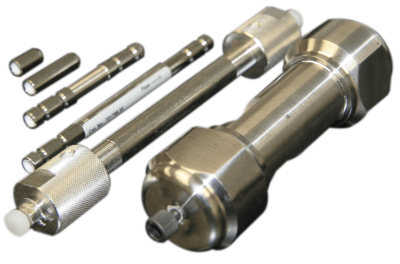As you reach the end of the run and possibly the conclusion of the workday, you may wonder what to do with the column you have recently used. You might consider whether it should remain attached to your system or if it is better to disconnect it and return it to the drawer.
You may also be wondering whether it is meant to be set aside and stored overnight or used as part of a new assay the following business day. It is also worth considering if the column is designated for longer-term storage.
To extend the useful and productive life of your column, as well as to achieve robust, rugged, and reproducible separations, it is important that a standard protocol for column maintenance is followed in each separation usage cycle.

Image Credit: Sorbent Technologies, Inc.
Overnight Storage, with Next-Day Subsequent Runs of the Same Analyte
Overnight storage options in this context can be addressed via two distinct approaches. The first involves leaving the column on the system after the last analysis and application of the system flush cycle. It is advisable to leave the solvent within the column at the highest percentage of the organic mixture.
The second option is to pass the mobile phase through the column at a very low flow rate for use on the subsequent day, typically set at the midpoint of the gradient mix. In cases where the organic solvent percentage is low, buffered mobile phases may require antibacterial additives like sodium azide (0.05%).
The following wash cycle is recommended when using the column for a new analyte and application to ensure thorough cleaning and complete conditioning for your subsequent use.
Longer-Term Storage
Before storing a column, initiate the following cleaning and regeneration cycle. It is imperative to ensure the column is tightly sealed at both end fittings after completing the cleaning process and then store it in a designated drawer.
Always mark the column with the last-use data to indicate that it has undergone the standard cleaning procedure. This is particularly beneficial when multiple users share columns in the lab.
To regenerate/clean a Silica based Reverse Phase HPLC Column, the following process is used:
Each of the following should be run at the appropriate column volumes, based on how the column has previously been used and the number of injections or problematic analytes, in the sequence as set out below:
- 20-column volumes Water/ACN (95/5 v-v)
- 20-column volumes Acetonitrile
- 10-column volumes Isopropanol
- 10-column volumes n-Heptane
- 5-column volumes Isopropanol
- 20-column volume Acetonitrile
- Follow with the mobile phase to be used for your separation until a stable baseline is achieved.
It is crucial to ensure that isopropanol is not left on the column; thus, follow it with the ACN and mobile phase steps outlined above. Columns should be stored in an 80% ACN and 20% water mixture. Finally, seal both ends of the column before placing it in the drawer.
For sticky proteins, the following should be used to clean/regenerate a column:
- Flush with 30-column volumes of the unbuffered mobile phase
- Next, use 20-column volumes of 0.1% TFA in water
- Follow with 20-column volumes of 0.1% TFA in ACN/IPA (1:2)
- Next, flush with 30-column volumes of 100% ACN
- Finally, the mobile phase is to be used for separation

This information has been sourced, reviewed and adapted from materials provided by Sorbent Technologies, Inc.
For more information on this source, please visit Sorbent Technologies, Inc.